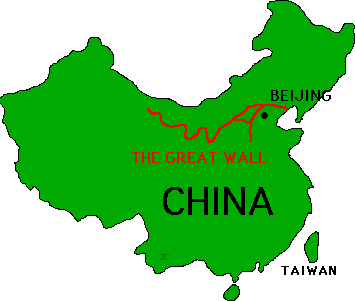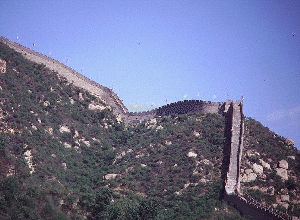

The Great Wall of China
When China was not yet a nation, small kingdoms built walls to their northern borders to defend against the hostile nomads from the north. In 221 BC, Emperor Ch'in became the first Chinese emperor and ordered the construction of new walls to link together existing walls, creating the Great Wall of China. During the Han dynasty that followed the Ch'in dynasty, watchtowers and beacons were added to warn of invasion.
The watchtowers were around 40 feet tall and could house troops and animals as well as store firewood and food supplies. When an enemy was sighted, the guards on duty signaled to the other towers with smoke in the daytime and fire at night.
The wall itself consisted of two 30-foot-high stone walls, parallel to each other. Rubble and pounded earth filled the gap between the walls, and brick overlaid the surface. The walls were wide and sturdy enough for messengers and soldiers to gallop down on horseback, an effective road to the point of an attack.
Not only was the Great Wall a defensive structure, however. Slaves could earn their freedom by working on the Wall. Farmers who had lost their lands could farm the land around the Great Wall. Grain was traded to the northern nomads for salt at this point. An entire set of communities grew up about the 1000 miles of wall.
For more information:

